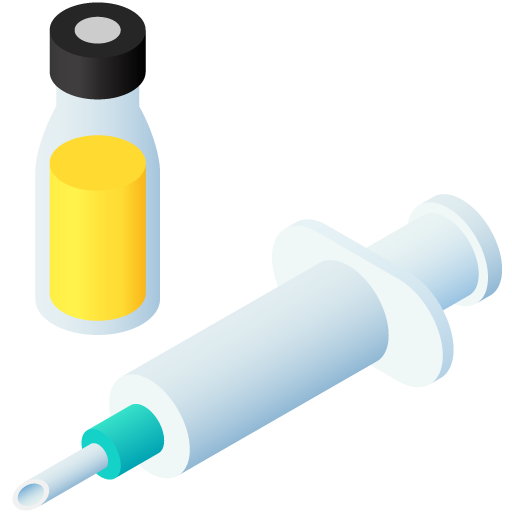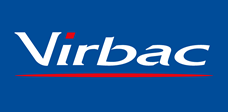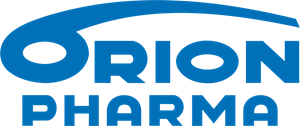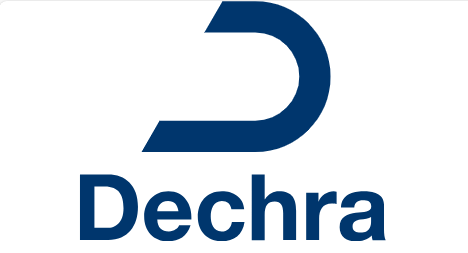Similar packages
Norocillin
ATC code
Species
Cattle
Sheep
Pigs
Indications
For the treatment of systemic infections caused by or associated with organisms sensitive to penicillin.
In vitro tests have shown the following organisms to be sensitive: Trueperella pyogenes, Erysipelothrix rhusiopathiae, Listeria, Mannheima haemolytica, Pasteurella multocida, Staphylococcus spp (non-penicillinase producing) and Streptococcus spp.
Norocillin is recommended, therefore, in the treatment of diseases caused by susceptible organisms including: erysipelas; navel/joint-ill; respiratory tract infections including pneumonia and atrophic rhinitis; listeriosis; septicaemia; urogenital tract infections and the control of secondary bacterial invaders in diseases of primary viral origin.
Dose to be administered and administration route
Administer by deep intramuscular injection only.
The recommended dose rate is: 10 mg/kg bodyweight (1ml/30 kg) daily for 3 to 7 days.
To ensure the correct dosage, bodyweight should be determined as accurately as possible to avoid underdosing.
The appropriate treatment duration should be chosen based on the clinical needs and individual recovery of the treated animal. Consideration should be given to the accessibility of the target tissue and characteristics of the target pathogen.
Adverse reactions
Very rarely, in sucking and fattening pigs, administration may cause a transient pyrexia, vomiting, shivering, listlessness and in-coordination.
In very rare cases hypersensitivity reactions may occur. Such reactions may evolve to a more severe condition (anaphylaxis), which may be life-threatening. Potentially fatal reactions associated with the administration of procaine penicillin in horses have been observed.
The frequency of adverse reactions is defined using the following convention: very common (more than 1 in 10 animals displaying adverse reactions during the course of one treatment) common (more than 1 but less than 10 animals in 100 animals) uncommon (more than 1 but less than 10 animals in 1,000 animals) rare (more than 1 but less than 10 animals in 10,000 animals) very rare (less than 1 animal in 10,000 animals, including isolated reports).
Systemic toxic effects have been observed in young piglets, which are transient but can be potentially lethal, especially at higher doses.
Dispensing
POM-V - Prescription Only Medicine – VeterinarianEMA Categorisation
SUMMARY OF PRODUCT CHARACTERISTICS
1. NAME OF THE VETERINARY MEDICINAL PRODUCT
Norocillin 30% w/v Suspension for Injection
2. QUALITATIVE AND QUANTITATIVE COMPOSITION
Active Substance:
Procaine Penicillin 300 mg/ml (30.0% w/v)
Excipients:
Methyl Parahydroxybenzoate 0.112% w/v Ethyl Parahydroxybenzoate 0.023% w/v
Propyl Parahydroxybenzoate 0.016% w/v
For a full list of excipients, see section 6.1
3. PHARMACEUTICAL FORM
Suspension for Injection
A white to off-white suspension.
4. CLINICAL PARTICULARS
4.1 Target species
Cattle
Sheep
Pigs
4.2 Indications for use, specifying the target species
For the treatment of systemic infections caused by or associated with organisms sensitive to penicillin.
In vitro tests have shown the following organisms to be sensitive: Arcanobacterium (Actinomyces) pyogenes, Erysipelothrix rhusiopathiae, Listeria, Mannheima haemolytica, Pasteurella multocida, Staphylococcus spp (non-penicillinase producing) and Streptococcus spp.
Norocillin is recommended, therefore, in the treatment of diseases caused by susceptible organisms including: erysipelas; navel/joint-ill; respiratory tract infections including pneumonia and atrophic rhinitis; listeriosis; septicaemia; urogenital tract infections and the control of secondary bacterial invaders in diseases of primary viral origin.
4.3 Contraindications
Do not inject intravenously or intrathecally.
Do not use in known cases of hypersensitivity to penicillin.
Not to be used on very small herbivores such as guinea pigs, gerbils and hamsters.
4.4 Special Warnings for each target species
None.
4.5 Special precautions for use
(i) Special precautions for use in animals Shake the container before use.
Care should be taken not to overdose.
Use of the product should be based on susceptibility testing of the bacteria isolated from the animal. If this is not possible, therapy should be based on local epidemiological information.
(ii) Special precautions to be taken by the person administering the veterinary medicinal product to animals
Care should be taken to avoid accidental self-injection.
Penicillins and cephalosporins may cause hypersensitivity (allergy) following injection, inhalation, ingestion or skin contact. Hypersensitivity to penicillins may lead to cross-reactions to cephalosporins and vice versa. Allergic reactions to these substances may occasionally be serious.
1. Do not handle this product if you know you are sensitised, or if you have been advised not to work with such preparations.
2. Handle this product with great care to avoid exposure, taking all recommended precautions.
3. If you develop symptoms following exposure such as a skin rash, you should seek medical advice and show the doctor this warning. Swelling of the face, lips or eyes or difficulty with breathing are more serious symptoms and require urgent medical attention.
Wash hands after use.
4.6 Adverse reactions (frequency and seriousness)
Very rarely, in sucking and fattening pigs, administration may cause a transient pyrexia, vomiting, shivering, listlessness and in-coordination.
In very rare cases hypersensitivity reactions may occur. Such reactions may evolve to a more severe condition (anaphylaxis), which may be lifethreatening. Potentially fatal reactions associated with the administration of procaine penicillin in horses have been observed.
The frequency of adverse reactions is defined using the following convention: - very common (more than 1 in 10 animals displaying adverse reactions during the course of one treatment)
- common (more than 1 but less than 10 animals in 100 animals)
- uncommon (more than 1 but less than 10 animals in 1,000 animals)
- rare (more than 1 but less than 10 animals in 10,000 animals)
- very rare (less than 1 animal in 10,000 animals, including isolated reports).
4.7 Use during pregnancy, lactation or lay
Norocillin can be safely administered to pregnant and lactating animals. However in pregnant sows and gilts a vulval discharge which could be associated with abortion has been reported.
4.8 Interaction with other medicinal products and other forms of interaction
None known.
4.9 Amounts to be administered and administration route
Administer by deep intramuscular injection only.
The recommended dose rate is: 10 mg/kg bodyweight (1ml/30 kg) daily for 3 to 5 days.
To ensure the correct dosage, bodyweight should be determined as accurately as possible to avoid underdosing.
4.10 Overdose (symptoms, emergency procedures, antidotes), if necessary
Penicillins show a wide margin of safety.
4.11 Withdrawal period
|
Cattle: |
Meat – 7 Days. Milk – 84 Hours. |
|
Pigs: |
Meat – 7 Days. |
|
Sheep: |
Meat – 7 Days. |
Do not use in sheep producing milk for human consumption.
5. PHARMACOLOGICAL PROPERTIES
Pharmacotherapeutic group: Antibacterials for systemic use.
ATC Vet Code: QJ01CE09
5.1 Pharmacodynamic properties
Antimicrobial activity is achieved by interference in the final stage of bacterial cell wall synthesis by binding to the PBP's (penicillin binding proteins).
6. PHARMACEUTICAL PARTICULARS
6.1 List of excipients
Methyl Parahydroxybenzoate
Ethyl Parahydroxybenzoate
Propyl Parahydroxybenzoate
Povidone K12
Disodium Edetate Dihydrate
Potassium Dihydrogen Phosphate
Sodium Citrate Dihydrate
Polysorbate 80
Simeticone
Water for Injections
6.2 Incompatibilities
None known.
6.3 Shelf life
Shelf life of the veterinary medicinal product as packaged for sale:
2 years
Shelf life after first opening the immediate packaging: 28 Days
6.4 Special precautions for storage
Following withdrawal of the first dose, use the product within 28 days.
Discard unused material.
Store in a refrigerator (2ºC – 8ºC). Protect from light.
6.5 Nature and composition of immediate packaging
50 ml and 100 ml multidose type II clear glass vials closed with bromobutyl rubber bungs and aluminium caps.
50 ml, 100 ml, 250 ml and 500 ml multidose clear polyethylene terephthalate (PET) vials closed with bromobutyl rubber bungs and aluminium caps. Not all pack sizes may be marketed.
6.6 Special precautions for the disposal of unused veterinary medicinal product or waste materials derived from the use of such products
Any unused veterinary medicinal product or waste materials derived from such veterinary medicinal products should be disposed of in accordance with local requirements.
7. MARKETING AUTHORISATION HOLDER
Norbrook Laboratories Limited
Station Works
Camlough Road
Newry
Co. Down BT35 6JP
Northern Ireland
8. MARKETING AUTHORISATION NUMBER
Vm 02000/4099
9. DATE OF FIRST AUTHORISATION
20 April 1998
10. DATE OF REVISION OF THE TEXT
August 2022
Approved 24 August 2022
![]()

| Art. Nr. | |
|---|---|
| EAN | 5023534000402 |
 TRUSTED SOURCE
TRUSTED SOURCE








